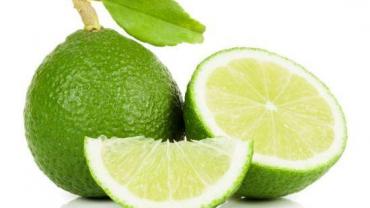
When it comes to citrus fruits and vitamin C lemons and oranges come to mind immediately. “Everyone knows” these are good sources of this key vitamin but their long shadows eclipse another fruit that is also a rich source and just as versatile in the kitchen: limes.
Like other citrus fruits limes are indeed a good source of vitamin C. In fact the vitamin C content of limes is how British sailors got the nickname “limeys.” As the story goes in the mid-eighteenth century Dr. James Lind discovered that something in citrus fruit was restoring the health of sailors who had been at sea a long time and had developed swollen sore and bleeding gums loose teeth and easy bruising and bleeding—signs we now classify as scurvy. Dr. Lind concluded the beneficial effect was due to something unique to citrus since the men who received lemons and oranges got better while those in the doctor’s comparison groups—who drank barley water seawater vinegar or cider—continued to deteriorate. Though the original experiment was conducted with lemons and oranges vitamin C was unknown at the time and it was believed that the acidity of the fruit was the curative factor. Lime juice is slightly more acidic than lemon juice so limes were provided on Royal Navy ships.
But limes are good for more than just preventing scurvy. Lime juice’s acidity and nutrients have powerful antimicrobial and anti-parasitic effects. Lime juice may be employed as an adjuvant to traditional parasite remedies increasing their efficacy. In a study that compared conventional antimalarial treatment to the treatment in combination with lime juice the lime juice group had >75% reduction in parasite load in a shorter time than the treatment group without lime juice and while a higher proportion of the treatment plus lime group achieved complete parasite clearance within 72 hours of starting the therapy ten patients (18.2%) without the lime juice had early treatment failure.
Adding lime juice to foods has been shown to kill foodborne pathogenic organisms such as Vibrio cholerae. This likely underlies the use of acidic mediums—lemon and lime juice and vinegar—as marinades and food preservation methods. It may also have led to the creation of ceviche a classic seafood dish in which the acidity of lime or lemon juice denatures and “cooks” the proteins while protecting the consumer against foodborne illness.
Limes are great in margaritas and guacamole but party drinks and chip dip aren’t the only ways to put limes and their juice to use. Fresh lime juice is a great way to add a bright acidic zing to many dishes and lime zest makes a pretty garnish for drinks and dishes that contain limes. Thanks to creative food bloggers there’s no shortage of gluten and dairy-free recipes for using limes. And while sweet treats are a more common vehicle for limes savory dishes showcase their flavor just as well. For something savory consider trying coconut lime chicken soup chili lime chicken wings or tequila cilantro lime chicken. On the sweet side there’s coconut lime macaroons and of course key lime pie or cheesecake. There’s even a great homemade version of the popular dried fruit and nut bars in the form of key lime pie bites.
(Okay go ahead have a margarita too. It’s happy hour somewhere!)
Before loading up your shopping cart with limes two words of caution:
First significant amounts of lime juice may be contraindicated for patients on blood thinning medication. Lime fruit was shown (at least in rats) to cause a reduction in the anti-coagulant activity of warfarin. This may have to do with the way vitamin C affects collagen formation and “platelet plugs.”
Second there have been case reports of limes causing a phototoxic reaction called phytophotodermatitis. This involves topical skin contact with an offending compound and subsequent exposure to sunlight. Phytophotodermatitis requires dermal exposure to light-sensitizing botanical substances in certain plants and then exposure of that skin to ultraviolet light (specifically UVA). Erythema bullae and hyperpigmentation may develop after skin comes in contact with plants or fruits containing furocoumarins. (Other furocoumarin containing foods that are associated with reports of phytophotodermatitis include lemons parsnips and fennel.) The lesions this temporary condition causes “can have bizarre shapes and are often painful not pruritic and appear only in sun-exposed areas which helps differentiate the condition from plant-related contact dermatitis.” Persian limes are more likely to cause this issue than the smaller and sweeter key limes and the offending coumarins are concentrated in the peel rather than the flesh.